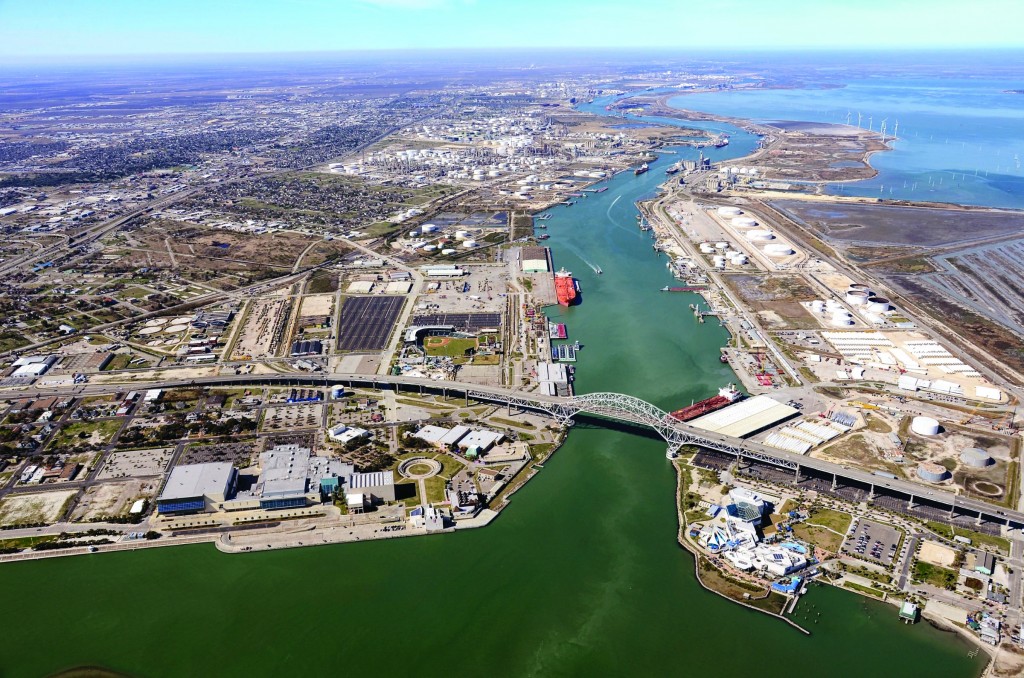Port of Corpus Christi included in President’s proposed FY 21 budget for $100 million
Feb 12, 2020In the newly released fiscal year 2021 President’s Budget, the White House included over $100 million for the Port of Corpus Christi’s Ship Channel Improvement Project (CIP) under the U.S. Army Corps of Engineers (USACE) Civil Works Division for Coastal Navigation Construction. This is the third consecutive year that the Port of Corpus Christi has been included in the President’s proposed budget.

“The Corpus Christi Ship Channel Improvement Project funding in President’s fiscal year 2021 proposed budget is a nod to Texas and the Nation’s energy independence, and conveys market certainty to our customers that the Port of Corpus Christi is the premier gateway for American energy exports for years ahead,” said Sean Strawbridge, Chief Executive Officer for the Port of Corpus Christi. “The need for improved coastal navigation infrastructure in Texas has never been higher. The Administration and the U.S Army Corps of Engineers know this to be the case, and the Port of Corpus Christi continues to collaborate with the Federal government to ensure our national security and economic prosperity.”
The proposed budget of $100,366,000 is a sharp increase from past budgets. The CIP received $53 million in the 2020 Federal budget and $13 million in the 2019 Federal budget. In addition, the USACE included $23 million in its 2018 Work Plan and $59 million in the 2019 Work Plan.
“I’m thankful President Trump has once again prioritized funding for the Port of Corpus Christi’s Channel Improvement Project in this year’s budget,” said Congressman Michael Cloud. “Investment into the Port is vital for economic growth in Texas and the United States. The Port also plays a strategic role in our country’s position as the global energy leader. As we export more American oil and gas, our allies are less dependent on Russia and Iran for those needs. Thank you to Port leadership and all those who’ve worked to bring the project this far.”
“This funding achievement is a watershed moment for our Port of Corpus Christi. The Channel Improvement Project is critical to reaching our nation’s energy goals, and we are deeply grateful to the Administration for its support,” said Charles W. Zahn, Jr., Chairman for the Port of Corpus Christi Commission. “We are honored to work with the Army Corps of Engineers and the Administration to continue advancing this pivotal project.”
Completion of the Corpus Christi CIP will allow for the safe passage of larger vessels carrying more export volumes of U.S. oil and natural gas, bolstering domestic energy production and supporting the nation’s allies abroad.
In January 2019, the USACE awarded Contract 1 of the CIP—the first of four phases—to Great Lakes Dredge & Dock Company, LLC, to deepen and widen the Corpus Christi Ship Channel (CCSC) from the Gulf of Mexico to Harbor Island. Contract 2 is expected to be awarded in March 2020. The Port of Corpus Christi exported over $20 billion of crude oil alone in 2019, reducing the nearly $400 billion trade deficit.
Similar Stories

Cuxport enhances operations with new terminal operating system from Kaleris
View Article
NAWE issues statement on Master Contract tentative deal
View Article
UIPA incentive supports Nucor Towers & Structures expansion in Brigham City
View Article
NRF praises tentative labor deal for East Coast, Gulf Coast ports
View Article
Hyster to provide electric empty container handler at Malta Freeport Terminals
View Article
Consolidated Chassis Management expands leadership team with four key hires
View ArticleGet the most up-to-date trending news!
SubscribeIndustry updates and weekly newsletter direct to your inbox!





